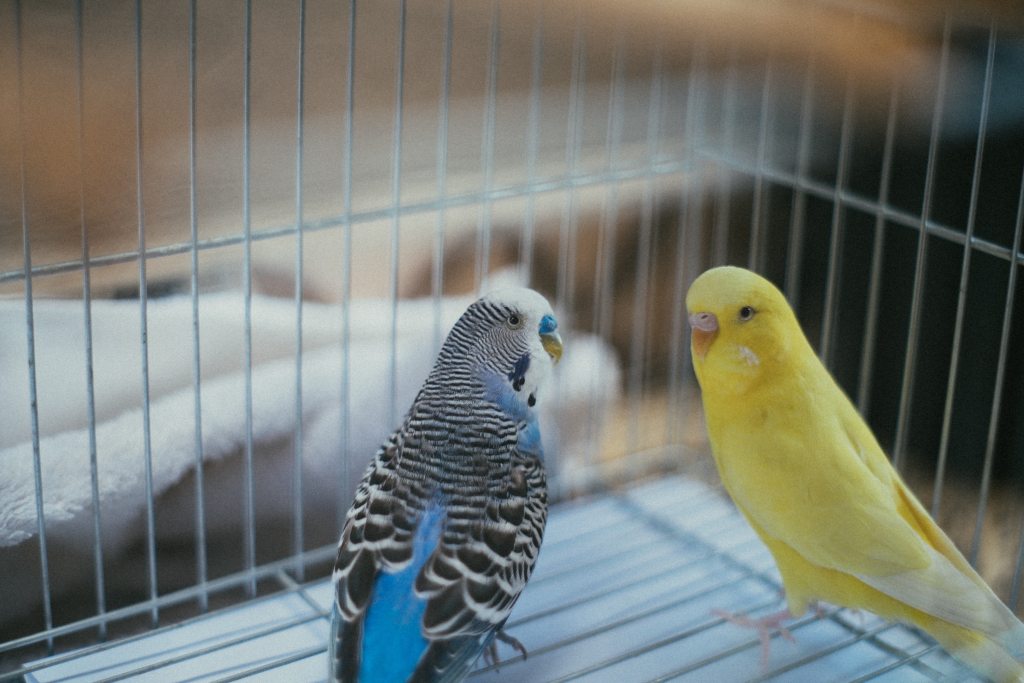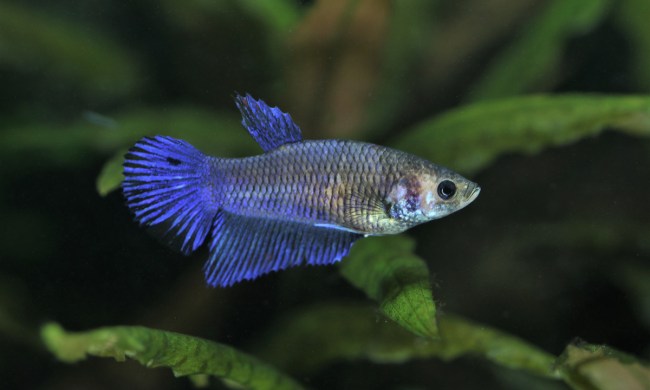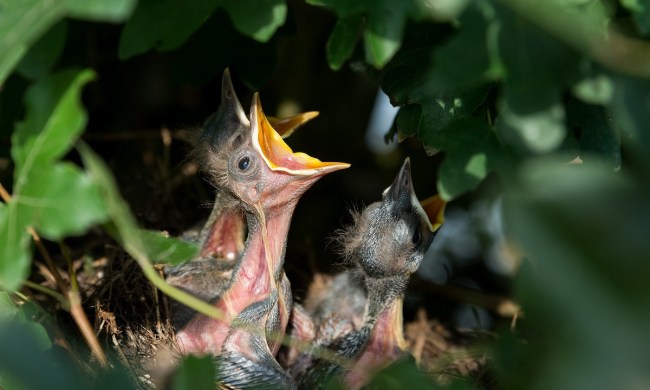Adding a bird to your home means adding a birdcage as well. You’ll find plentiful options, including multistory, outdoor, and travel cages. Different models will work for different species, and you need to ensure that the cage you wind up bringing home will fit, too. No matter what cage you buy, we recommend taking your bird out frequently to ensure she gets the exercise she needs.
Is having a caged bird cruel?
Placing a large bird in a small cage and never letting her out would certainly be cruel. First of all, you need to buy big enough housing for your pet. Then, you’ll want to have a plan for letting her out to play and fly around. If you’re able, bird-proof a room in the house to act as her playroom where she can get in plenty of flying time and also interact with you and the family. Some especially large birds, like hyacinth macaws, won’t fit into a standard cage at all, and you should plan for one to spend much of her time free.

What size cage do I need for my bird?
Smaller birds like parakeets, need a cage of only about 18 cubic inches (or of similar size but different shape), though you should increase that space by at least a foot in length and width for each bird you add. Canaries and other finches require extra-tall cages so they can fly around a lot. For larger birds, get a cage that’s double your pet’s wingspan as they need to be able to open and flap with ease.
What cage is best for a bird?
Your perfect cage will vary based not just on the bird you choose but also on your home and the space you have. Get creative! You can find something to fit perfectly for both of you.
Yaheetech 39-Inch Roof Top Large Bird Cage w/Toys
A small flock of birds who love to fly, like budgies or canaries, will thrive in this cage. Included in the home, the ladder and swing will help fill the space and encourage your pets to hang out at every level, making great use of its dimensions. A happy reviewer describes it as “a mansion for something small like a parakeet or a finch,” although a few owners note that it was tricky to put together, which can also make cleaning more difficult.
Vivohome 59.8-Inch Wrought Iron Bird Cage with Play Top and Rolling Stand
This cage is made to be easy for you — it’s sturdy, comes with storage, and moves on wheels so you can bring your bird to different parts of the house. Unlike other cages, it’s made of iron, so you won’t have to worry about it breaking, which customers love. You could keep one medium bird or a couple of small ones here. As a reviewer says, “This is kind of like a ‘two-story’ cage!” so you can design top and bottom differently to suit your needs.
Prevue Pet Products Lincoln Bird Cage
A more traditional and smaller birdcage, this is one you’d pick only for a singleton or just a couple of lovebirds. The best part is, it doesn’t require assembly and is completely welded together. While that certainly means it won’t break, you need a different cleaning plan since you can’t take it apart to scrub down. However, a reviewer explains, it’s simple to get in. “This cage has easily accessible food and water cups, plastic guards to keep most of the seeds in the cage, and enough room for the two of them.”
Gutinneen Outdoor Bird Aviary Wooden Large Bird Cage
For more advanced bird enthusiasts, this indoor and outdoor cage will fit a larger bird such as an African grey. It includes multiple levels and doors with accessories like a ramp, feeder, and nest. Bird owners mention that they made tweaks when assembling, so you might have to be handy to build this one, but that means you can adjust it to your own needs. The instructions do recommend two people to put it together, but a customer chimes in, “Easy to assemble with just 1 person, just takes a little longer.” The wooden structure will be more fragile than an iron one, but it looks great.
Blue Mars Bird Carrier Travel Cage
No matter which standard home you choose, you need a travel cage. Remember, this is only for special occasions, but it still needs to be safe and secure. This particular model comes in varying sizes for different birds, so you can select the one that works best for your pet. Because it folds up, you can store it easily and unpack it as needed. “Cleaning it is a breeze and I would purchase again,” says a happy buyer — you can wipe it down and take out the removable tray.
One more thing to think about: While owning a bird can be a wonderful experience for both of you, putting a wild animal into captivity is never a good idea. Research carefully so you know exactly where your bird came from and who her parents were. You can also look into adopting your pet — since these guys often live decades, you’ll still have plenty of bonding time left.



